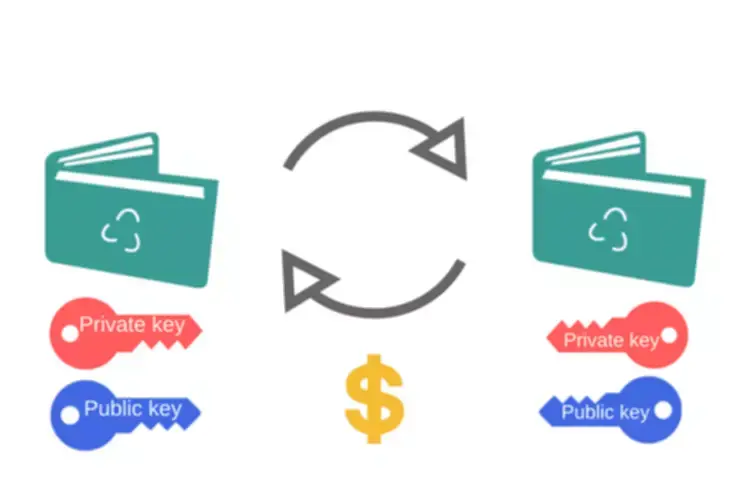Remember, while you like to know which marketing campaign gives you the most number of users, it doesn’t automatically mean that’s the best campaign. There are times when some marketing campaigns give you fewer but more loyal, engaged, and profitable users. With mobile attribution, you can isolate each of your marketing networks and see which of them is the most successful. Aside from that, you can check each of your marketing campaigns and see which of them provides the best results. In recent years, advertisers have been increasing their budgets for mobile advertising; eMarketer forecasts that mobile ad spend in the U.S alone will hit $161.49 billion by 2024. The increase in mobile app spending has heightened the need and importance of mobile attribution.
- Instead, you should create an ad server with unrestricted IDs to improve the accuracy of your attribution system.
- Single-touch attribution models (like first-touch, last-touch, and list non-direct touch) are simple to implement but have several disadvantages.
- Apple informed app developers that “fingerprinting,” a probabilistic attribution mechanism, is prohibited unless users give specific authorization.
When you want a more balanced insight into your client’s marketing strategy. Attribution models are a framework and set of rules that determine how to assign a result to a variable. The attribution is usually done by assigning a numeric value to each variable and computing a resulting score to find which variable had the major impact on the result. If you find yourself tracking data to multiple Facebook Ads accounts on the same website, you’ll need to customize your scripts to make sure you’re collecting the right information. You might have different Facebook pixels for teams from separate departments or regions.

Your number one aim is to improve your app’s visibility in app stores so more people discover your app. You can do this by using the right keywords, placing keywords in the right places, improving screenshots, creating app previews, choosing the best app icon, and crafting compelling descriptions. By having the right data about your user source, you can dramatically improve your marketing strategies. It tells you where to focus your efforts and improve how you allocate your budget. Deep links, as the name suggests, link to deeper features within an app versus the welcome screen.

An attribution window is a period during which eligible conversion events can be claimed. The conversion events can be an app install, added to cart, or purchase. This information lets the attribution provider ascertain whether it’s a new or existing user. The easiest way of receiving all this information is to integrate your app with the attribution provider’s (Trackier’s) SDK.

This enterprise multi-touch attribution tool can give you clear visibility into your marketing touchpoints and how they impact your customer’s journey. This tool automation feature lets you collect and analyze data by integrating with ad software, CRM platform, and other marketing tools. This model assigns credit for the sale to each of the touchpoints and, in this way, is similar what is mobile attribution to the linear attribution. The difference is that assigns more relevance to the most recent touchpoints and the earlier interactions are assigned less weight. This attribution model differentiates between direct and non-direct touchpoints, giving the credit for the sale to the last non-direct interaction. This includes email campaigns, Twitter posts, or influencer marketing.
Once you know which model you want to start with, gather your customer data sources, and look for a marketing attribution tool that can work with your data. Consider a CDP that can organize your data in one place and provide robust multi-channel attribution and analytics. Well-known analytics tools like Google Analytics are great for single-touch attribution and can integrate many customer data sources for a unified view of marketing effectiveness.
This may narrow down your options, but it justifies working with a limited pool of publishers. There are billions of people using countless smartphones and other mobile devices, so stakeholders need the ability to tell these apart. A device’s advertising ID is a unique string of numbers and letters, which allows advertising platforms to identify each smartphone, tablet, and mobile device out there.
If none of those models seem to focus on the data points you find most valuable in the customer journey, you have the option of customizing a model. This is often done with the full-path model as the starting point, then you can adjust the weight of other milestones along the customer journey that you think might be significant. The simplicity of first-touch attribution is its main advantage, plus the fact that it’s a great way to measure top-of-the funnel (demand gen) efforts.
The last-click is important, but so too are the 1,000 high quality assists, even if other media sources (e.g. Facebook, Google Search) led to the last-click install. Within that architecture, attribution — which credits a marketing activity that delivered a desired goal — is the key. Successful app marketing depends on an array of platforms within a tech stack and how they are connected. In nearly two decades as a marketer, Michael’s experience has run the gamut from design, development, direct mail, multivariate testing, print and search. He now heads Portent’s analytics practice, overseeing everything from Google Tag Management, to CRM integration for closed-loop analytics, to solving ponderous digital marketing questions.
An attribution window (a conversion window) is a set amount of time a publisher can claim that a click or impression resulted in an install. For instance, an advertiser may set an attribution window of seven days. In light of the different options, choosing the type of attribution model that meets your marketing needs is essential. Even if you already have the right attribution https://www.xcritical.in/ tool, you still need to have the expertise to properly interpret and analyze the data you have gathered. Nevertheless, the main difference is that web attribution is done on the web while app attribution is done in mobile applications. With a simple tracking tool, you might easily identify that it is your landing page that caused him to download the app.
PPC is often a low-funnel highly-targeted place to start, but how do you justify the results you are driving? Compare the results of several to see which one you can best optimize, and keep in mind that the more sophisticated the model, the more resources it will likely take to apply it. We give the first touch lots of credit, for introducing someone to our brand. And then we sprinkle some loose change on the comparison shopping touches in between. Any efforts to retrieve the identification will result in a string of zeros rather than the identifier itself.
Today a state-of-the-art mobile DSP can provide comprehensive options to target the most relevant audience precisely. When attribution models are calibrated well, success is a matter of time. SmartyAds DSP has been successfully connecting businesses of diverse industries with their audiences by programmatic targeting. Our DSP solution helps companies to achieve their strategic marketing goals due to efficient ad campaigns and their precise attribution.
Mobile app attribution has difficulty measuring return on investment. Aside from that, mobile attribution can’t effectively measure offline data relevant to conversions. Mobile attribution can help you gather vital data to help you formulate the best advertising strategies. For example, mobile attribution can identify where your users came from. Once you are able to measure your marketing effort, you also can compare them accurately.

